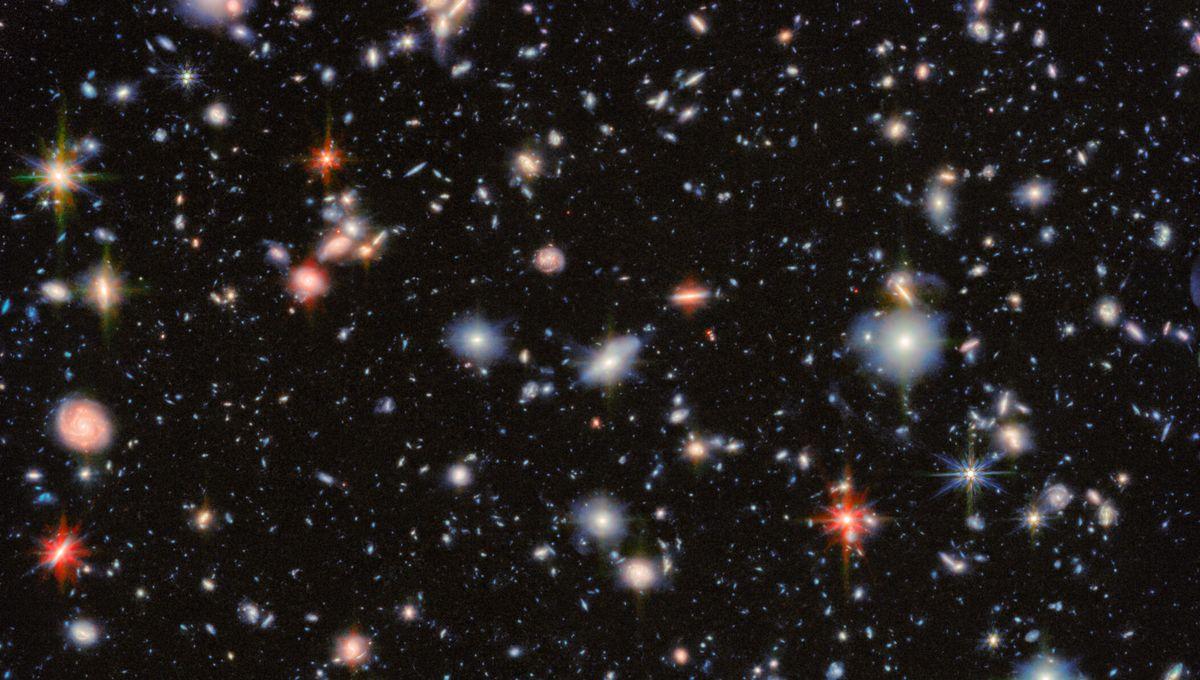Over 20 years ago, the Hubble Space Telescope looked at a little patch of sky for days, with this methodical approach catching the light of galaxies that existed when the universe was not even 1 billion years old. This was the Hubble Ultra Deep Field, a panorama of 10,000 galaxies that took 400 orbits of Hubble around the Earth to complete. A total exposure time of 271 hours and 12 minutes produced what, at the time, was a unique window into the earliest galaxies that ever existed.
JWST has now spent almost 100 hours, its longest extragalactic observation yet, looking at a portion of the Hubble Ultra Deep Field, containing around 2,500 sources. Combining the near and mid-instruments observations from JWST reveals important insights into the galaxies near and far (actually very far and very very far) that are captured in this newly released image. The JWST image is in false colors because the telescope studies the universe in infrared. The longer wavelengths are converted to red and orange, and tend to track the dust, star formation, and even the activity of supermassive black holes at the center of these distant galaxies. Lacking a sufficient amount of any of those things or a combination, the galaxies shine in the nearer infrared seen here in blue and cyan. There is a third wavelength, though; everything that sits between the two is in white and green, middle wavelengths in the instrument capabilities. Those are the more distant galaxies in this image, whose light has been shifted to a redder version than usual, from the accelerated expansion of the universe. This process is known as redshift. A GIF showing the Hubble versus JWST view of this field. Image credit: NASA, ESA, and S. Beckwith (STScI) and the HUDF Team/ESA/Webb, NASA & CSA, G. Östlin, P. G. Perez-Gonzalez, J. Melinder, the JADES Collaboration, M. Zamani (ESA/Webb); animated by IFLScience The Hubble Ultra Deep Field image was a game-changer, and JWST shows with this work why it is a worthy successor to Hubble. It was designed to go beyond Hubble’s capabilities, and this is exactly what that means. Look at those distant galaxies pop from the darkness of the cosmos. The original Hubble observations allowed researchers to better understand what was happening in the earlier eons of the universe. It was particularly crucial in allowing astronomers to understand what was going on with galaxies in particular early in the history of the cosmos. JWST is going to deliver even more insights. The Hubble Ultra Deep Field is tiny. Hold a ballpoint pen in your hand and stretch out your arm. The tip of it is around 1 square millimeter, which is at one meter from your eye, roughly the apparent size of this area in the sky. Yet, in this tiny patch, there are hundreds of the most distant galaxies we have ever seen. Thanks to JWST, now we are seeing them even better than before..gif)





